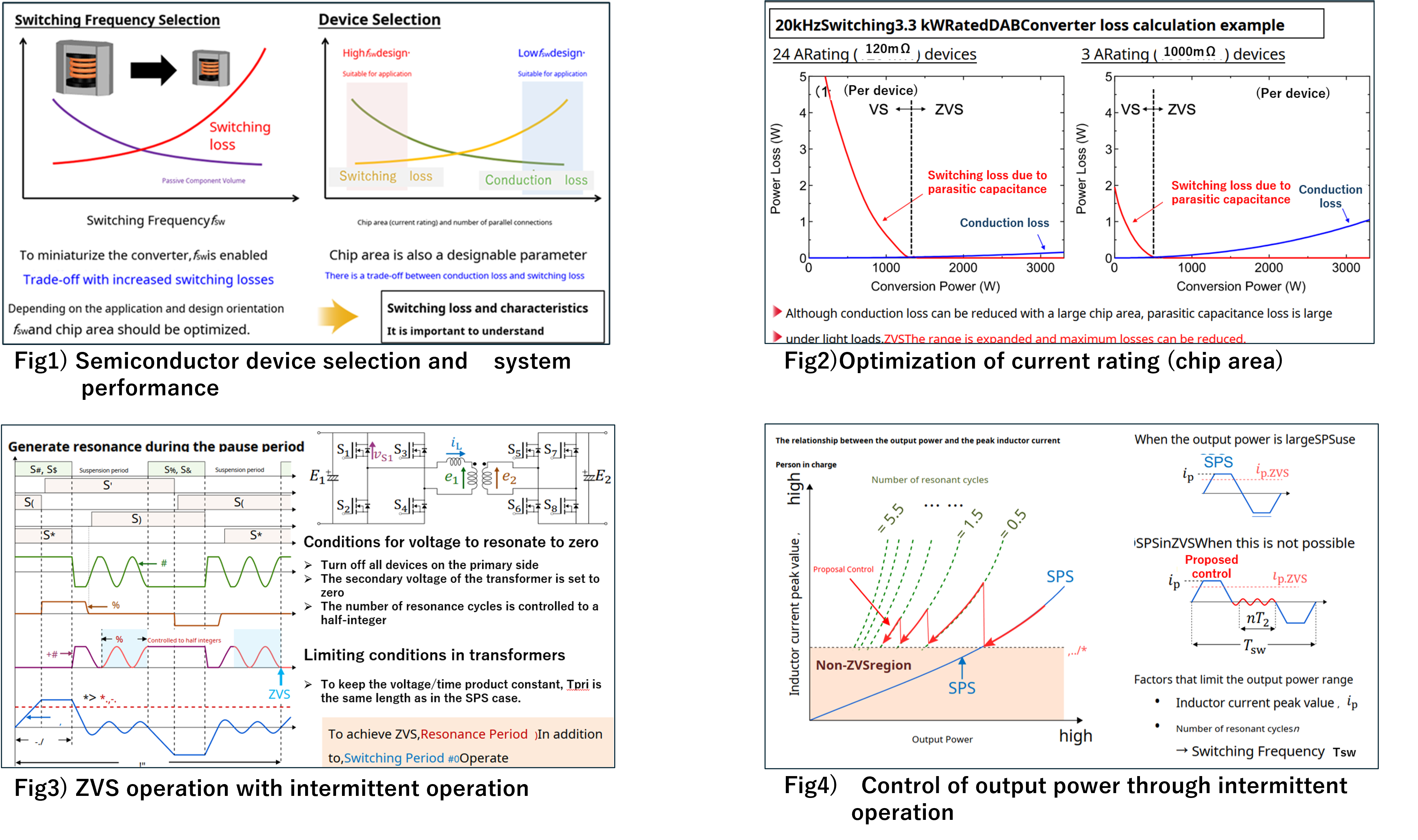Advantage and Core Benefit
⮚ Achieves Zero Voltage Switching (ZVS) even during intermittent operation, improving efficiency
⮚ Reduced switching losses allow for higher switching frequencies, enabling transformer miniaturization
⮚ Suppresses increased losses despite large parasitic capacitance of semiconductor devices, allowing the use of large-area semiconductor chips and reducing conduction losses
Background and Technology
Energy-saving measures driven by environmental and resource issues are being promoted across society. With the increasing dependence on electrical energy, the impact of power electronics on society is also growing. One method to improve converter efficiency involves “intermittent operation,” which reduces switching frequency and switching losses by introducing off periods for light loads. However, Dual Active Bridge (DAB) converters, which enable high-efficiency power conversion through Zero Voltage Switching (ZVS), face the challenge of being unable to achieve ZVS during intermittent operation and light loads.
This invention provides technology that allows efficient control of output power even during intermittent operation and enables ZVS, thereby improving overall efficiency. Reduced switching losses allow for higher switching frequencies, making transformer miniaturization possible. Additionally, it suppresses the increase in losses even with large parasitic capacitance of semiconductor devices, enabling the adoption of large-area semiconductor chips and reducing conduction losses.
Data
 |
 |
Patent
Patent Pending
Researcher
Takanori Isobe (Associate Professor, Power Electronics Laboratory, University of Tsukuba)
Expectations
As a bidirectional isolated DC-DC converter, it is expected to replace power transformers with semiconductor transformers (SST) and can be used in onboard chargers for electric vehicles with V2G (vehicle-to-grid) capability. We are looking for joint research or licensing opportunities to manufacture these devices using this technology.
Project.DD-04903


